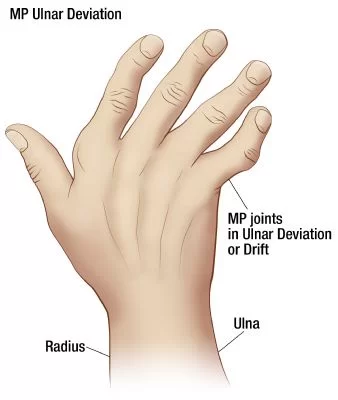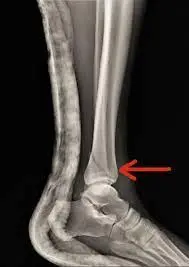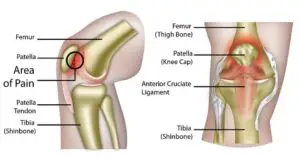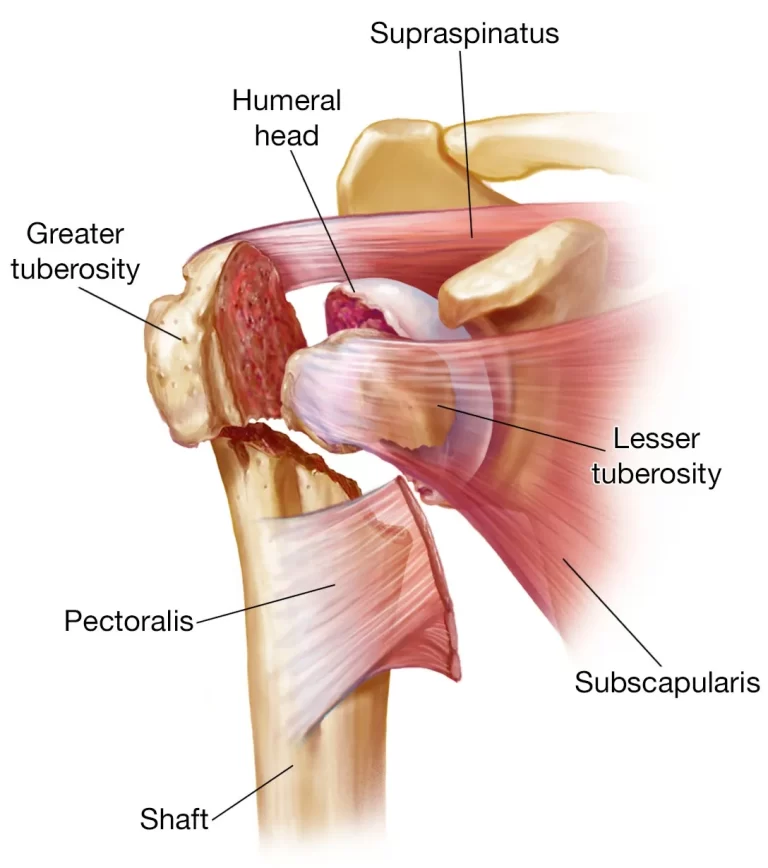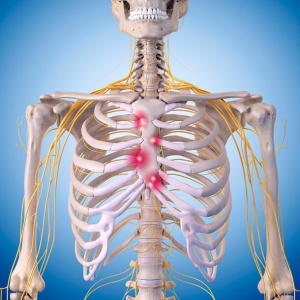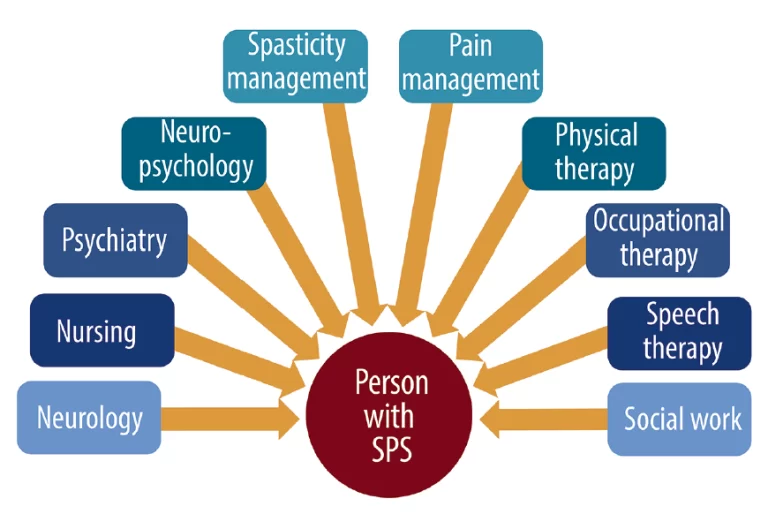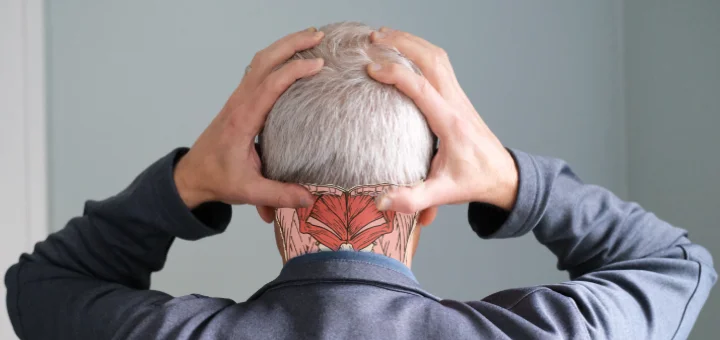Ulnar Deviation of the Wrist
What is Ulnar Deviation of the Wrist?
Ulnar deviation, also known as ulnar drift, occurs when the wrist and hand joints move, causing the fingers to bend in the direction of the ulna bone on the outside of the forearm. It may be the result of issues with the wrist or knuckles.
Ulnar deviation can be caused by knuckle joint inflammation as well as issues with the ligaments or muscles in the wrist and hand.
Ulnar deviation patients can still use their hands and fingers. But as infants become older, they could find it harder to do things like tie their shoes or hold very little objects.
Symptoms of the Ulnar Deviation of the Wrist
The hand bending towards the ulnar side of the wrist is the main symptom.
Other symptoms are:
- Ulnar deviation may be painful at the ulnar side of the wrist when the hand bends towards the pinky finger. Activities that require grasping, lifting, or twisting actions may make this pain worse.
- Joints in the wrist, hand, and fingers may swell, warm up, or hurt.
- Lower grip strength due to the fingers’ restricted range of motion.
- Long-term ulnar deviation may contribute to the development of a particular deformity, which is frequently seen in diseases like rheumatoid arthritis.
- Numbness and Tingling: Changes in joint mechanics that compress nerves in the wrist area can cause numbness, tingling, or a “pins and needles” sensation in the hand and fingers.
- Functional Restrictions: Pain, weakened grip power, and restricted range of motion can all have a major negative influence on a person’s ability to carry out everyday tasks and activities requiring for accuracy and fine motor skills.
- Ulnar deviation can make it more difficult to perform fine motor tasks like tying a shoelace, buttoning a garment, or using a keyboard.
Causes of the Ulnar Deviation of the Wrist
Wrist ulnar deviation can have a number of anatomical and clinical reasons. Accurate diagnosis and effective management depend on an understanding of these underlying causes.
The following are some typical reasons of ulnar wrist deviation:
- Rheumatoid Arthritis: This autoimmune condition, especially in the hands and wrists, can cause inflammation and damage to the synovial lining of the joints. Ulnar deviation can occur as a result of the fingers moving towards the ulnar side of the hand when the joint parts deteriorate.
- Osteoarthritis: Ageing or repeated stress-related wear and tear of the cartilage in the wrist joint can change the mechanics of the joint. This may result in ulnar deviation and other wrist alignment problems.
- Injury or Trauma: The wrist joint’s normal alignment can be altered by fractures, dislocations, and other traumatic injuries. Ulnar deviation can occur during the healing process as a result of poor alignment.
- Conditions that damage the body’s connective tissues, such as Ehlers-Danlos syndrome or Marfan syndrome, can cause joint laxity and abnormalities, which may result in ulnar deviation.
- Tenosynovitis: Inflammation of the tendon sheaths surrounding the wrist joint can impair how well the tendons work and cause adjustments to the alignment of the joint.
- Muscle Imbalances: The muscles that control wrist mobility might become weak or unbalanced, which can lead to abnormal joint mechanics, such as ulnar deviation.
- Compression of the nerves in the wrist can result from conditions like carpal tunnel syndrome, which can cause the muscles in those areas to weaken and cause joint misalignment.
- Genetic Factors: Some people may be predisposed genetically to joint malformations like ulnar deviation.
- Repetitive motions from work-related activities, such as typing, using tools, or playing musical instruments, can put strain on the joints and increase the risk of deviations.
- Injury to the ligaments that support the wrist joint can compromise its stability and alignment, which can result in ulnar deviation.
- Degenerative joint diseases, such as Kienböck’s disease, which is characterized by the degeneration of particular wrist bones, can interfere with joint mechanics and cause deviations.
- Diseases of the System: Some diseases of the system, such as systemic lupus erythematosus, can affect several joints and cause joint deformities, such as ulnar deviation.
- Disorders of the neuromuscular system: A few neuromuscular abnormalities can impair muscle control and cause irregular joint alignment.
For an effective treatment strategy for treating ulnar deviation of the wrist, a correct diagnosis of the underlying cause is essential. Physical therapists, orthopaedic surgeons, and rheumatologists all play important roles in assessing the illness, determining the cause, and recommending the best interventions to control symptoms and improve wrist function.
Diagnosis
The identification of ulnar deviation of the wrist requires a thorough evaluation that may include imaging tests, a medical history review, and a physical exam. In most cases, the diagnosing process involves medical professionals such orthopaedic surgeons, rheumatologists, or hand specialists. Here is a summary of the diagnostic procedures:
- Medical History: The healthcare professional will start by getting a thorough medical history, which will include details about the onset and duration of symptoms, any relevant prior injuries, illnesses, and family history of joint issues. Understanding the potential reasons of ulnar deviation is made easier by the information provided.
- Physical examination: It is crucial to do a complete physical examination of the affected wrist, hand, and fingers. The medical professional will evaluate the patient’s range of motion, joint stability, alignment, and any inflammation or deformity that may be present.
- Laboratory Tests: To assist in the diagnosis of autoimmune diseases like rheumatoid arthritis, blood tests such as rheumatoid factor (RF) and anti-cyclic citrullinated peptide (anti-CCP) antibody tests may be prescribed. Additional blood tests can aid in excluding any systemic illnesses or infections that might be causing the symptoms.
- Functional Assessment: The medical professional may assess how the ulnar deviation affects your capacity for everyday living. This evaluation aids in making treatment decisions and keeping track of development.
- Medical imaging: More in-depth details on soft tissues, ligaments, and joint structures can be obtained using advanced imaging techniques like MRI or CT scans.
- Electrodiagnostic Studies: Nerve conduction studies (NCS) and electromyography (EMG) can help assess nerve function and identify any anomalies in situations when nerve compression or dysfunction is suspected.
The healthcare professional will be able to identify the underlying cause of ulnar deviation and develop a treatment strategy based on the results of these diagnostic procedures. It is crucial to get an early and precise diagnosis in order to start the proper therapies and stop subsequent consequences.
Treatment of Ulnar Deviation of the Wrist
The underlying reason, the severity of the symptoms, and the patient’s general health have an impact on how ulnar deviation of the wrist is treated. Healthcare providers may decide that a complete approach calls for a combination of non-surgical and surgical treatments.
Here are a few possible remedies:
- Physical therapy: A physical therapist can provide exercises to increase the strength, range of motion, and flexibility of the wrists and hands. In order to reduce stress on the wrist, they can also teach you about good joint mechanics and ergonomic procedures.
- Bracing or splinting: Splints or braces for the wrist can offer stability, support, and lessen the strain on the injured joint. Such devices might be especially useful when engaging in activities that make discomfort worse.
- Nonsteroidal Anti-Inflammatory Drugs (NSAIDs): These drugs can help lessen the discomfort and swelling caused by ulnar deviation. Due to potential negative effects, long-term use should be discussed with a healthcare professional.
- Disease-Modifying Antirheumatic Drugs (DMARDs): If an autoimmune illness, such as rheumatoid arthritis, is the root cause of ulnar deviation, DMARDs may be recommended to treat the underlying condition and stop the disease’s progression.
- Lifestyle changes: Reducing stress on the wrist joint by avoiding activities that aggravate symptoms, eating healthily, and using ergonomic practices.
Corticosteroids:
Direct injections of corticosteroids may occasionally be used to temporarily reduce pain and inflammation in the afflicted joint. Due to possible side effects, these injections are typically administered very occasionally.
Surgical Treatment
- Synovectomy: A synovectomy may be performed to remove inflammatory synovial tissue that is causing joint deviation and deformity in situations like rheumatoid arthritis.
- Joint Fusion (Arthrodesis): Joint fusion may be an option in cases of significant joint pain and injury. To stop mobility and pain, this involves permanently joining the joint’s bones.
- Advanced joint damage can require joint replacement surgery, in which the injured joint surfaces are replaced with prosthetic parts.
- Tendon Transfers: In some circumstances, tendon transfers may be done to alleviate muscle pull imbalances and enhance joint alignment.
- Ligament Repair or Reconstruction: In order to repair or reconstruct torn ligaments that cause joint instability and deviation, surgery may be advised.
It’s crucial to remember that the selection of a course of treatment can be affected by a variety of personal circumstances, including the precise diagnosis, the existence of additional medical conditions, and the preferences and goals of the patient.
In order to better wrist function, reduce pain, and improve general quality of life, healthcare specialists will work closely with patients to build a specialized treatment plan that addresses their particular needs.
Exercise for Ulnar Deviation of the Wrist
Exercise is essential for controlling wrist ulnar deviation and enhancing overall wrist health. A focused workout regimen can help with pain alleviation and the prevention of subsequent issues while also improving wrist strength, flexibility, and range of motion. Before beginning any workout programme, it’s crucial to speak with a healthcare professional or physical therapist, especially if you have an existing medical condition or show severe symptoms.
Following are some activities that can help with ulnar deviation:
Wrist Flexor and Extensor Strengthening:
Wrist Flexion Exercise:
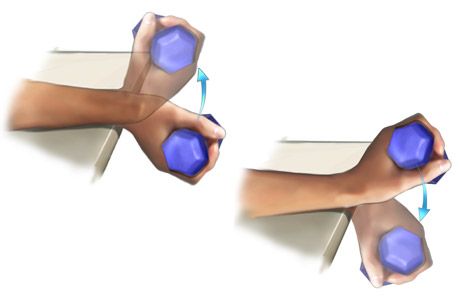
Hold a light dumbbell or a resistance band in your hand with your palm facing up. Allowing your hand to hang over the edge, rest your forearm on a table or your thigh. Curl your wrist slowly upward, then slowly back down. On each side, perform many repetitions.
Wrist Extension Exercise
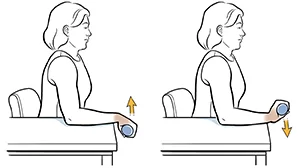
With your palm facing down, perform an exercise similar to the flexion exercise. By pushing up against the resistance, raise the rear of your hand to extend your wrist.
Wrist Circles:
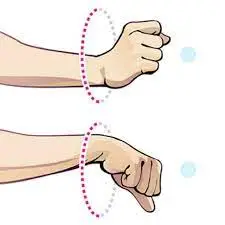
To increase your wrist’s flexibility and range of motion, gently rotate it in both clockwise and anticlockwise directions.
Wrist Flexor and Extensor Stretches
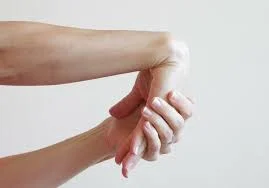
Your palm should be facing down when you extend your arm out in front of you. You should feel a stretch in your wrist extensors as you gently press your fingers and hand downward with the opposite hand. To target the wrist flexors, repeat the stretch with your palm pointing upward.
Finger and Grip Strength Exercises
Finger Squeezes
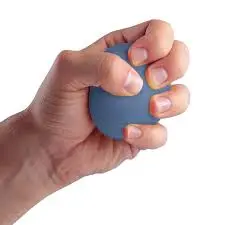
Squeeze a soft ball or a grip enhancer between your fingers and palm. For a little moment, squeeze, then release. Repeat a number of times.
Finger Extensions
Put rubber bands around your fingers, then try to open your hand while doing so. The wrist-joint-area muscles can be balanced with the use of this workout.
Wrist Stability Exercises:
Wrist Push-Ups
Starting on your palms and toes, perform a push-up. Bend your elbows to gradually lower your body, then push yourself back up. The wrist’s stabilizing muscles are strengthened as a result of this workout.
Plank with Forearm Support
Maintain a straight line from your head to your heels while holding the plank position on your forearms and toes. Stabilize your wrists and engage your core.
When performing ulnar deviation exercises, keep the following in mind:
- To prevent overexertion, begin with slow, soft motions and progress gradually.
- Exercises should be performed with no discomfort. Stop the exercise if you have any pain during exercise.
- To prevent strain or damage, concentrate on good form and technique.
- Regularly engage in exercise, ideally with the assistance of a physical therapist or other trained fitness expert.
- Consult a healthcare professional if you’re unsure about a workout or whether it’s suitable for your condition.
Summary
The wrist joint’s muscles and tendons control ulnar deviation of the wrist, which involves lateral movement of the hand towards the ulnar side of the wrist. Even though it’s necessary for regular work, a severe deviation or condition can cause symptoms. Common symptoms include pain, a decreased grasp, restricted movement, swelling, deformity, and numbness.
Arthritis, trauma, genetic predispositions, and job stress are among the causes. Diagnostic procedures include physical examinations, imaging studies, and testing. Physical therapy, bracing, medicines, and even surgery are used as forms of treatment for various conditions. Exercise can improve function, increase flexibility, and strengthen the wrist.
FAQs
What is the normal ulnar deviation?
73 degrees of flexion, 71 degrees of extension, 19 degrees of radial deviation, 33 degrees of ulnar deviation, 140 degrees of supination, and 60 degrees of pronation are considered to be normal wrist ROM values.
What muscles cause wrist ulnar deviation?
The primary muscles responsible for wrist ulnar deviation include:
Flexor Carpi Ulnaris: This muscle originates along the medial epicondyle of the humerus (upper arm bone) and inserts into the pisiform bone and the base of the fifth metacarpal (pinky finger). Contraction of the flexor carpi ulnaris leads to wrist ulnar deviation.
Extensor Carpi Ulnaris: This muscle originates from the lateral epicondyle of the humerus and inserts into the base of the fifth metacarpal. It assists in ulnar deviation when contracting.
Flexor Digitorum Superficialis: Although its primary function is flexing the fingers, this muscle also contributes to wrist ulnar deviation when contracting.
What nerve is the ulnar deviation?
Ulnar deviation is a physiological wrist movement in which the hand and fingers move towards the direction of the ulna. In ulnar deviation, flexion of the muscles controlled by the ulnar nerve is unaltered but not that of the muscles controlled by the median nerve.
Can ulnar deviation be corrected?
The ulnar deviation at the MCP joints has been suggested to be fixed surgically using a variety of techniques. In the early stages of RA, synovectomy of the MCP joints in conjunction with a crossed intrinsic transfer has been recommended as a viable treatment option.

